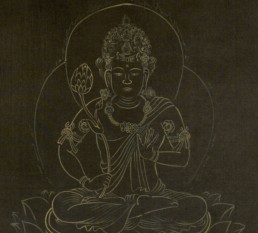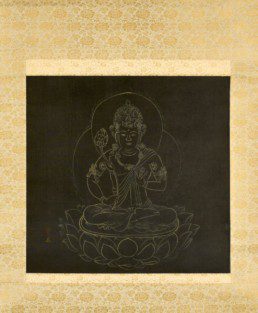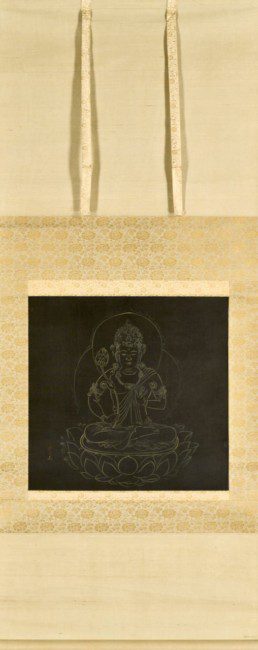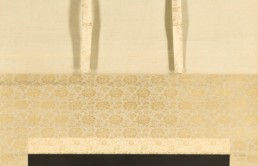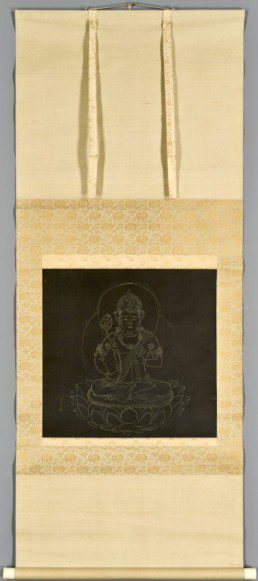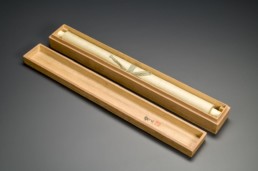[Bodhisattva] by Kimura Buzan (1876 – 1942)
Artist:Kimura Buzan (1876 - 1942)Era:Taisho/ ShowaPrice:$3,000Inquire:info@shirakuragallery.com
Seated in meditation with open and compassionate heart, this bodhisattva is on a spiritual journey, postponing his own salvation in order to remain on earth to help others achieve enlightenment. In contrast to some images of the Japanese Bodhisattva (Bosatsu), often depicted as austere and inward looking, here, Kimura depicts the Bodhisattva as playful, carefree, and decidedly ornate. The inverted image of white contrast dye on black silk also makes for a striking composition.
A master of traditional Japanese painting (nihon-ga), much of Kimura Buzan’s body of work centers on religious imagery. In fact, one of his greatest works resides at the main hall of Mt Koya’s Kongobu temple, a series of four panels depicting the enlightenment of prince Shakyamuni arranged as a mandala. Unfortunately, at the height of his career Kimura suffered a stroke, leaving him with limited use of his right arm. Determined to carry on with his work, he took up the name “hidari-Buzan” (left-handed Buzan) and continued painting until his eventual death at the age of 67. Today his works are sought after by collectors and held by museums around the world including the Museum of Fine Arts, Boston and the Tokyo National Museum.
White paint on Japnanese silk (kenpon) with a silk border, this scroll is 136cm tall and 54.5cm wide. The artwork on the scroll is 40.5cm tall and 42cm wide and signed by the artist (examples of Kimura’s signature and seals available upon request). In very good condition, this scroll comes with its original wood box that also bears Kimura signature and seal.
Additional Resources:
https://en.wikipedia.org/wiki/Kimura_Buzan
https://www.fujibi.or.jp/en/our-collection/profile-of-works.html?work_id=4416
